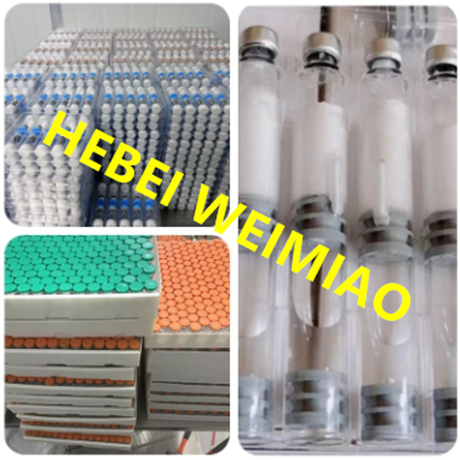
- +86-13363869198
- weimiaohb@126.com

Mar . 25, 2024 10:52 Back to list
How much mercury spilled will make the air unsafe
Mercury is a metal found naturally in the environment (soils, rocks, oceans). It comes is a few forms. Elemental (metallic) mercury is the shiny, silver-gray liquid metal found in thermometers, barometers, thermostats, fluorescent (CFL) lamps and light bulbs, medical and science equipment and other electrical switches. Elemental mercury’s chemical symbol is Hg.
Why is mercury dangerous?
Just using a product that contains mercury is usually not dangerous. If the product having mercury breaks and the mercury spills out, that’s when problems begin:
- Elemental mercury can break into droplets when spilled. The droplets spread easily and can build up or hide in tiny cracks and spaces wherever it is spilled. These drops can continue to turn into vapors that can be breathed in by students and staff even years after a spill.
- https://www.weimiaobio.com/
- Mercury can vaporize (evaporate) into the air. The vapor cannot be seen or smelled.
- Breathing in mercury vapors is the most common way to get mercury poisoning – and also the most dangerous.
How much mercury spilled will make the air unsafe?
If more than two tablespoons of mercury are spilled, it is mandatory to call the National Response Center (NRC), available 24 hours a day, at 1-800-424-8802.
Any amount of mercury spilled indoors can be hazardous. The more mercury spilled, the more its vapors will build up in air and the more hazardous it will be. Even a small spill, such as from a broken thermometer, can produce hazardous amounts of vapor if a room is small enough, warm enough and people spend a good deal of time there, as in a small schoolroom, closet, or bathroom.
Mercury vapor is heavier than air and likes to remain near the floor area when the spill happened. It can build up in poorly ventilated or low-lying areas in a school.
How to clean up mercury spills
Ways to clean up a mercury spill vary with the types of things that broke or spilled containing mercury. In all cases open windows and doors to the outside. Close doors in other parts of the school building. Do not allow children to help clean up a mercury spill. Have all unneeded people leave the area of the spill and don’t allow them to walk through the mercury spill area.
- Never use a vacuum cleaner to clean up mercury.
- Never use a broom to clean up mercury.
- Never pour mercury down a drain.
- Never walk around if your shoes might be contaminated with mercury.
How can mercury affect my health?
Mercury poisoning can affect the nervous system, lungs, and kidneys. And it’s most dangerous for children. Breathing in mercury vapor over time may cause symptoms like:
- Feeling anxious, shy, or nervous or tired (grumpy)
- Not feeling hungry
- Memory problems
- Hearing problems
- Trembling (shaking)
Who is most sensitive to mercury spills?
The following groups are especially sensitive to the harmful effects of mercury:
- Young children – They tend to play on floors where mercury may have been spilled, are lower to the floor than adults, and are more likely to breathe more vapors than an adult because they breathe faster and have smaller lungs.
- Pregnant women – Mercury can pass from a mother’s body to her developing fetus.
- Infants – Mercury can also be passed to nursing infants through breast milk.
What tests are available for elemental mercury exposure?
Urine or blood samples can be tested to see if children have been exposed to too much mercury. A urine test is preferred for measuring elemental mercury. Urine samples may be collected over a 24-hour period, or taken once (preferably in the morning after awakening). A blood test can be used to measure exposure to high levels of mercury if the child can be tested within three days of being exposed.
If a test shows a child has been poisoned by exposure to mercury, your doctor can prescribe medications that will remove the mercury from the child’s body.
Call the Tennessee Poison Center toll free at 1-800-222-1222, if you or your doctor need help understanding your child’s results.
Did you know?
- Mercury is the only metal on earth that is liquid at room temperature.
- Liquid mercury is so slippery that it will fall off your skin if you try to hold it.
- It is so heavy that 2 tablespoons of mercury weighs about one pound.
- In the 1800’s hat makers started using a form of mercury to help make the wool in hats feel softer. Since they didn’t know mercury was dangerous, many hat makers were poisoned. When brain damage from mercury poisoning made them act strangely, people started using the phrase “mad as a hatter.”
-
Pharmaceutical Intermediates - AI-Optimized Synthesis & Purity
NewsJul.31,2025
-
Top CAS: 79099-07-3 Factories & Wholesale Supplier from China
NewsJul.30,2025
-
High-Quality GS-441524 for White Liquid Type Factories & Suppliers
NewsJul.29,2025
-
High-Quality Pharmaceutical Intermediates for Sale – Reliable Supply
NewsJul.29,2025
-
High-Quality Pharmaceutical Intermediates for Sale - Reliable Solutions
NewsJul.29,2025
-
High-Quality Pharmaceutical Intermediates Supplier for Global Market
NewsJul.28,2025
